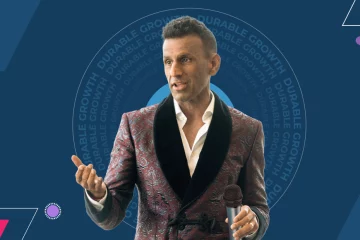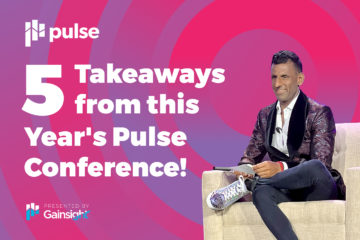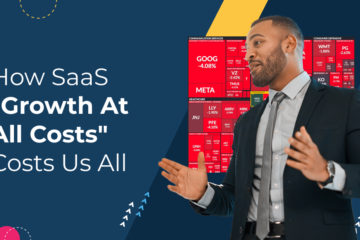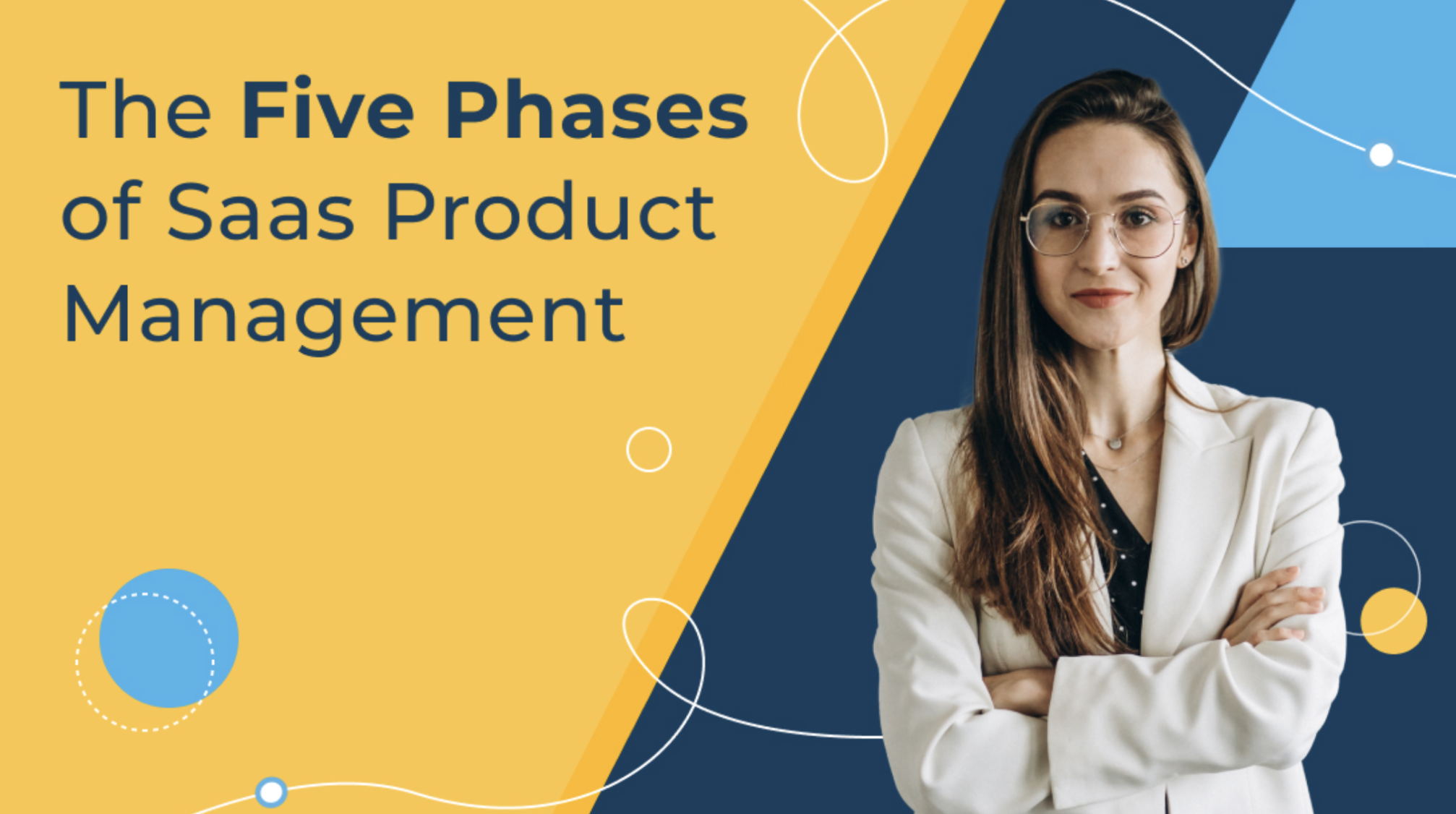
This article was originally published on Fast Company.
My first real job was as a Product Manager at a software company in 2002. I remember sitting in my tiny, windowless office and launching my Windows XP laptop for the first time. And I remember asking the PM in the office next door to help me onboard and answer some basic questions like “What does a Product Manager do?”
His response: “We ship stuff every 18 months. Your job is to figure out what Sales needs to close their deals, write it down, and pass it on to Engineering. Every now and then, a Gartner analyst will tell you what needs to be done and you must write that down too.” Responses like this left me wondering “So what exactly do I do here, Bob?”
If the job was messy then, Product Management is manic today with nearly every SaaS company claiming to be “product-driven.” A notable change from the past is the adoption of the agile development model which compresses planning time from 12 to 18-month release cycles (old waterfall model) into an endless cycle of 2-week sprints. Another one is that back then, inputs were mainly coming from sales and analysts. Today, this includes but isn’t limited to online community feedback, reviews, user surveys, product telemetry, inputs from analysts and internal teams and the growing tribe of “product-oriented” CEOs.
Despite all these challenges, Product teams have continued to move forward and evolve as companies get more sophisticated. Gainsight recently collaborated with Method Garage, a Customer Journey Consulting firm to map out the stages of product management maturity and what every company should do to move forward to the next level.
The SaaS Product Management Maturity Model
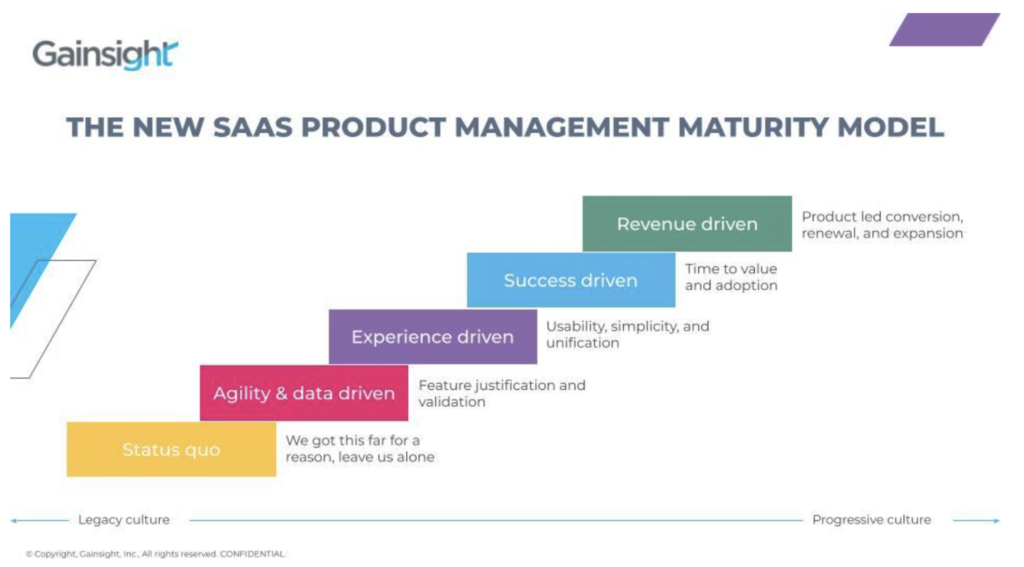
Phase 0: Status Quo
Everyone starts here. This is the land that produced Product Requirements Documents and TPS reports.
In all seriousness, many companies still operate like “feature factories” today, where the core mission of the Product organization is to “ship” a release every 18 months or so. The world of on-premise software can be hardware-driven or monolithic and doesn’t require constant innovation.
Companies in this phase have moved their product to the cloud in terms of hosting and pricing model but still operate with an on-premise mindset when it comes to product management. No company should stay in this phase for long. The sooner they change their mindset, the more ready they will be to embrace SaaS growth.
Phase 1: Agility and Data-Driven
“Let’s go agile—that will solve all our problems.” Those are the famous (last) words of many product leaders trying to move on from phase 0!
In this phase, companies start embracing the unique power of the cloud, which is the ability to see what users are doing through product telemetry and analytics. Even if companies don’t always know what to do with the data and the new vision they have, they at least know how customers are using their products. At this stage, the voice of the customer becomes prominent and they start to incorporate external feedback for validation.
The best teams in this phase arrive at common definitions for adoption and usage across the Product team and client-facing teams like Customer Success, so everyone is rowing in the same direction.
Phase 2: Experience Driven
Now that Product Managers can “see” their users, it’s natural to want to learn more. Product teams in this phase want to go beyond pure usage data to understand user sentiment. They might leverage in-app surveys to measure user Net Promoter Score or ask users about the ease of use of a feature through a Customer Effort Score.
In this phase, Product teams start getting even closer to the customer-facing (Sales and Customer Success teams) since the “experience” for the client is more than just the product.
Phase 3: Success Driven
The fact is that customers buy products to drive their business outcomes. They don’t care how often you “ship” or what your “adoption” rates are. In recognition of this, the goalposts for Product teams are moving from “shipping” to “adoption” to “outcomes.” How can a Product Manager ensure that their feature is driving the value that clients expect?
In this phase, Product teams are working very closely with Customer Success teams on developing frameworks to measure customer outcomes and mapping feature requests to the outcomes or value they are tied to. They also collaborate with each other on “Success Plans” for key clients, to understand their overall business objectives.
Phase 4: Revenue Driven
This entire maturity model is all about putting companies on a more repeatable and durable growth path. The most efficient companies in SaaS leverage Product-Led Growth (PLG) to have their product drive as much of the lifecycle—from trial to conversion to onboarding to adoption to renewal and expansion—as possible. According to the Product-Led Growth Index, 2022, a PLG motion already exists in 58% of surveyed companies, and 91% of surveyed companies adopting PLG plan to increase their investment in PLG strategies.
For existing companies, PLG isn’t an “on or off” switch. They must find ways to adapt PLG practices to the reality of their companies. Some might keep the “land” sale as a high-touch model but create ways for clients to try out “paywalled” new features in the product. Others might choose to invest in creating a digital renewal experience.
No matter which route you take, PLG requires tight collaboration between Product, Sales, and Customer Success teams because customers will need to be seamlessly passed from product flows into the high touch teams and back. Remember, customers care about the entire experience your company offers.
Conclusion
Over the last two decades, SaaS has completely changed how we do business. Every department and leader has had to rewrite their own personal playbooks. It’s exciting to see how PM teams are leading the charge and reinventing themselves. Thankfully, the days of people wondering “What does a PM do?” are behind us.

